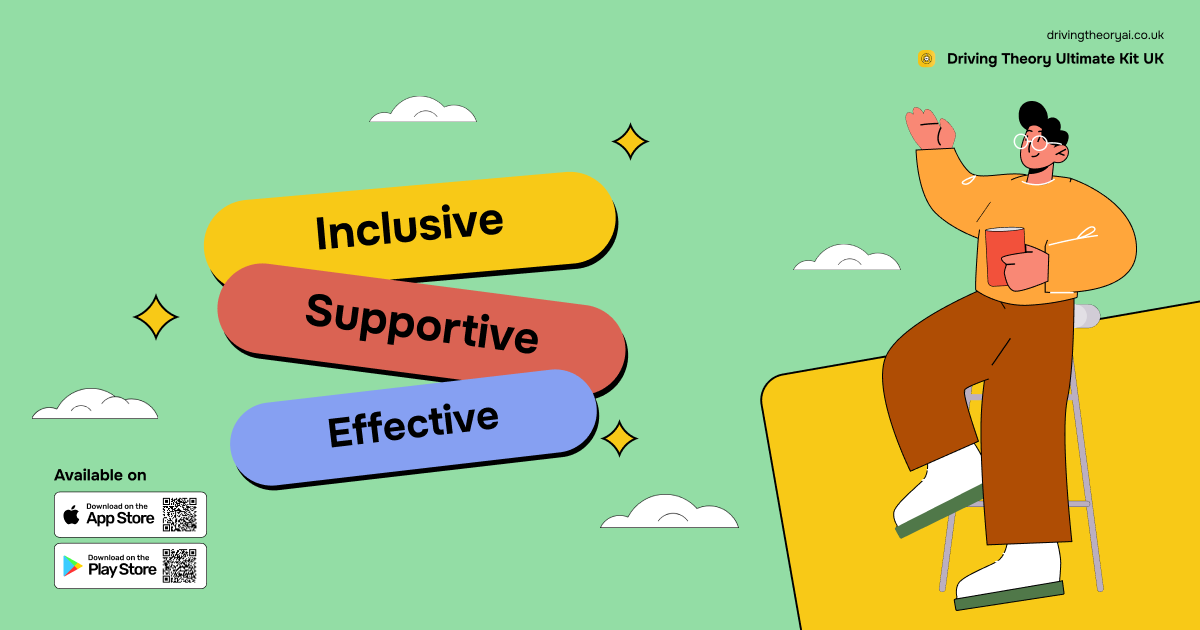
Passing the driving theory test is an essential milestone for UK learner drivers, but it’s not always easy. Whether it’s understanding road signs, answering situational scenarios, or preparing via a driving theory mock test 2024, many questions can confuse even the most diligent learners.
This blog breaks down the 10 trickiest questions with clear, simple explanations to help you master them.
Question 1: Rejoining the Carriageway from an Emergency Area
Question: “You have stopped in an emergency area. What must you do before rejoining the carriageway?”
Drive onto the carriageway quickly
Use your hazard lights and wait for cars to give way
Call for assistance via the emergency phone
Rejoin when you think it is clear
Correct Answer: Call for assistance via the emergency phone
Topic: Motorway Rules
Explanation: Before rejoining an emergency area, you must contact emergency services and follow the operator’s advice. This ensures safety and minimises risks on busy carriageways. In certain cases, the operator may have to close a lane for you to rejoin the carriage way safely.
Question 2: Identifying Reflective Studs on Motorways
Question: “Where can you find amber reflective studs on a motorway?”
Between the lanes of a dual carriageway
Between the central reservation and carriageway
Between slip roads and the carriageway
Along the hard shoulder
Correct Answer: Between the central reservation and carriageway.
Topic: Motorway Rules
Explanation: On motorways, amber-coloured reflective studs are placed on the right-hand edge of the main carriageway, next to the central reservation. These studs enhance visibility in low-light conditions, helping drivers stay in the correct lane during darkness or poor visibility. Understanding reflective stud colors is crucial for road safety and effective navigation.
Question 3: Effects of Unbalanced Wheels
Question: “What will happen if your car’s wheels are unbalanced?”
The brakes will fail
The steering will pull to one side
The steering will vibrate
The tyres will deflate
Correct Answer: The steering will vibrate
Topic: Safety and Your Vehicle
Explanation: If your wheels are unbalanced, you’ll notice vibrations through the steering wheel, particularly at certain speeds. This can also lead to uneven tyre wear and affect vehicle handling. It’s important to address this issue promptly by taking your car to a garage or tyre fitter to rebalance the wheels, as it won’t resolve itself.
Question 4: Parking at Night on Roads with High Speed Limits
Question: “What must you do when parking on a road with a 40 mph speed limit at night?”
Park facing the traffic
Leave parking lights switched on
Leave dipped headlights switched on
Park near a streetlight
Correct Answer: Leave parking lights switched on
Topic: Parking Regulations
Explanation: On roads with speeds exceeding 30 mph, you must keep your parking lights on to ensure your vehicle remains visible to others.
Question 5: Placement of Warning Triangles After a Breakdown
Question: “You’ve broken down on a two-way road. You have a warning triangle. At least how far from your vehicle should you place the warning triangle?”
5 metres (16 feet)
25 metres (82 feet)
45 metres (147 feet)
100 metres (328 feet)
Correct Answer: 45 meters (147 feet)
Topic: Emergency Breakdown Safety
Explanation: Placing a warning triangle 45 meters (147 feet) behind your car helps warn approaching traffic. It’s essential for your safety and others on the road.
Question 6: Flashing Amber Lights at Pelican Crossings
Question: “What must you do when you approach flashing amber lights at a pelican crossing?”
Stop and wait for the green light
Stop and wait for the red light
Give way to pedestrians waiting to cross
Give way to pedestrians already at the crossing
Correct Answer: Give way to pedestrians already on the crossing
Topic: Attitude
Explanation: Pelican crossings are signal-controlled crossings operated by pedestrians using push-button controls. Unlike standard traffic lights, they feature a flashing amber light, which means you must give way to pedestrians already on the crossing. If the crossing is clear, you may proceed.
Question 7: Overtaking on a One-Way Street
Question: “Where are you allowed to overtake on a one-way street?”
Only on the left-hand side
Only on the right-hand side
On either side, if safe
You must never overtake
Correct Answer: When you’re in a one-way street
Topic: Rules of the road
Explanation: On a one-way street, you can overtake on either side because traffic flows differently than on two-way roads. Always check your mirrors and ensure the road is clear before overtaking. Pay attention to signs and road markings to choose the most suitable lane for your destination and ensure safety.
Question 8: Overtaking a Vehicle on the Left
Question: “When may you overtake another vehicle on their left?”
When you’re in a one-way street
When approaching a motorway slip road where you’ll be turning off
When the vehicle in front is signalling to turn left
When a slower vehicle is travelling in the right-hand lane of a dual carriageway
Correct Answer: When you’re in a one-way street
Topic: Vehicle Handling
Explanation: Overtaking on the left is permitted under specific conditions, such as when driving on a one-way street or when traffic is moving slowly in lanes. Always stay alert to drivers who may need to change lanes and might not expect faster vehicles passing on their left. Safety and awareness are crucial in these situations.
Question 9: Fuel-Saving Driving Techniques
Question: “Which driving habit saves fuel?”
Missing out some gears
Using lower gears as often as possible
Accelerating sharply in each gear
Using each gear in turn
Correct Answer: Missing out some gears
Topic: Safety and Your Vehicle
Explanation: Selective gear changes, such as skipping intermediate gears when appropriate, help to reduce fuel consumption and improve engine efficiency. This minimizes the time spent accelerating and decelerating, when your vehicle uses the most fuel, allowing you to save money and drive more efficiently over time.
Question 10: Lane Usage on a Three-Lane Dual Carriageway
Question: “When should you use the right-hand lane of a three-lane dual carriageway?”
-
When you’re turning right only
-
When you’re overtaking only
-
When you’re using cruise control
-
When you’re overtaking or turning right
Correct Answer: When you’re overtaking or turning right
Topic: Rules of the Road
Explanation: On a dual carriageway, the right-hand lane is reserved for overtaking or turning right. After overtaking, you must return to the left-hand lane, which is for normal driving. When using the right-hand lane, stay alert for vehicles ahead that may be slowing or stopping to turn right, so you can respond appropriately and safely.
Understanding these 10 tricky questions is key to acing your theory test. Use resources like the Driving Theory Ultimate Kit UK for driving theory practice test UK to revise efficiently and learn from common mistakes. Tackling these questions with confidence will bring you one step closer to hitting the road!
If you’re preparing for the driving theory test in 2024 or exploring how to tackle practice driving theory, read more about everything you need to know for the driving theory test, from registration to preparation.

Contact Information
For support or inquiries, email us at pr*****@*****te.uk
Follow Us on Social Media: Facebook | Instagram
Join the conversation in our Theory Driving Learners Community.

